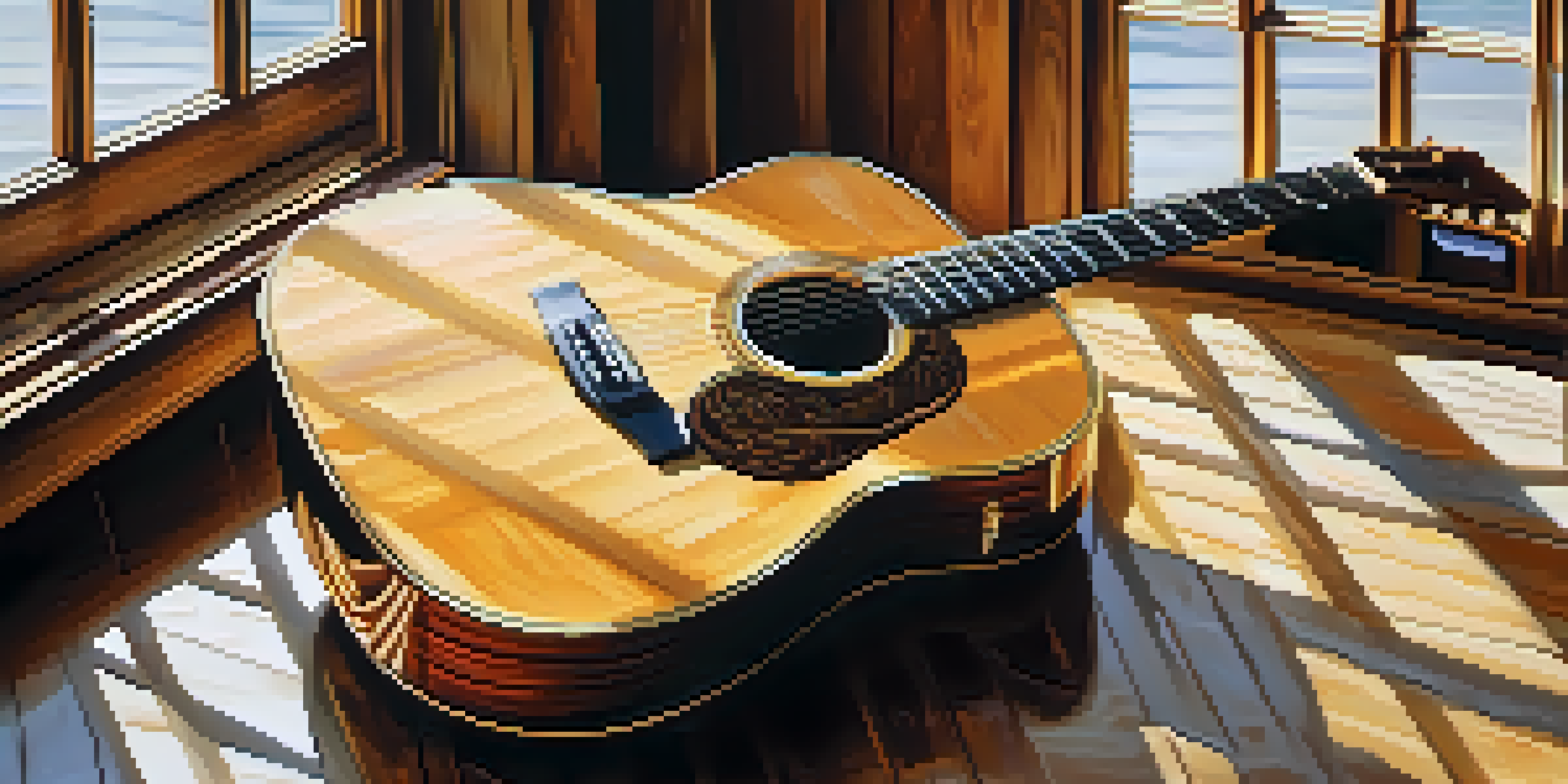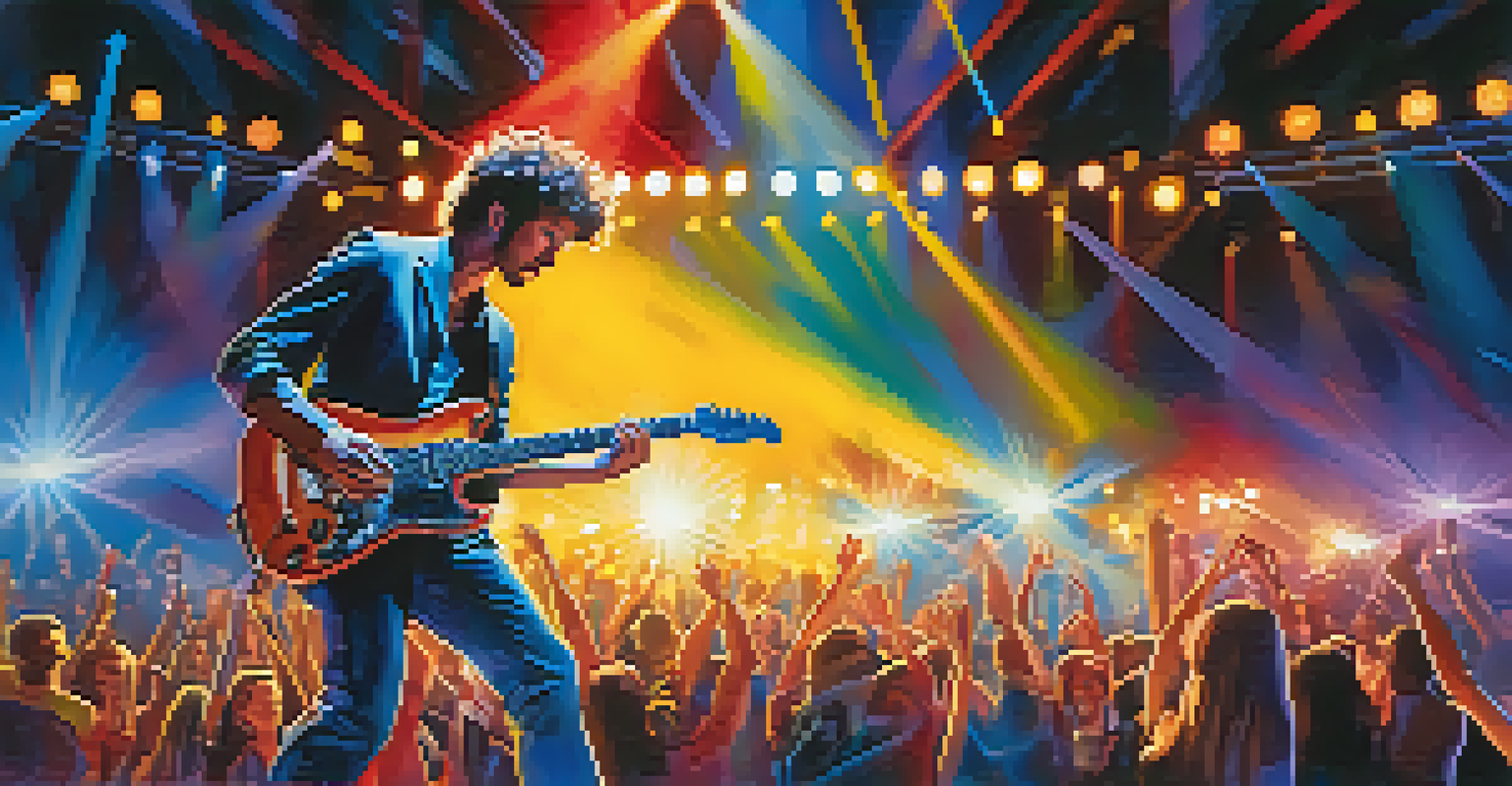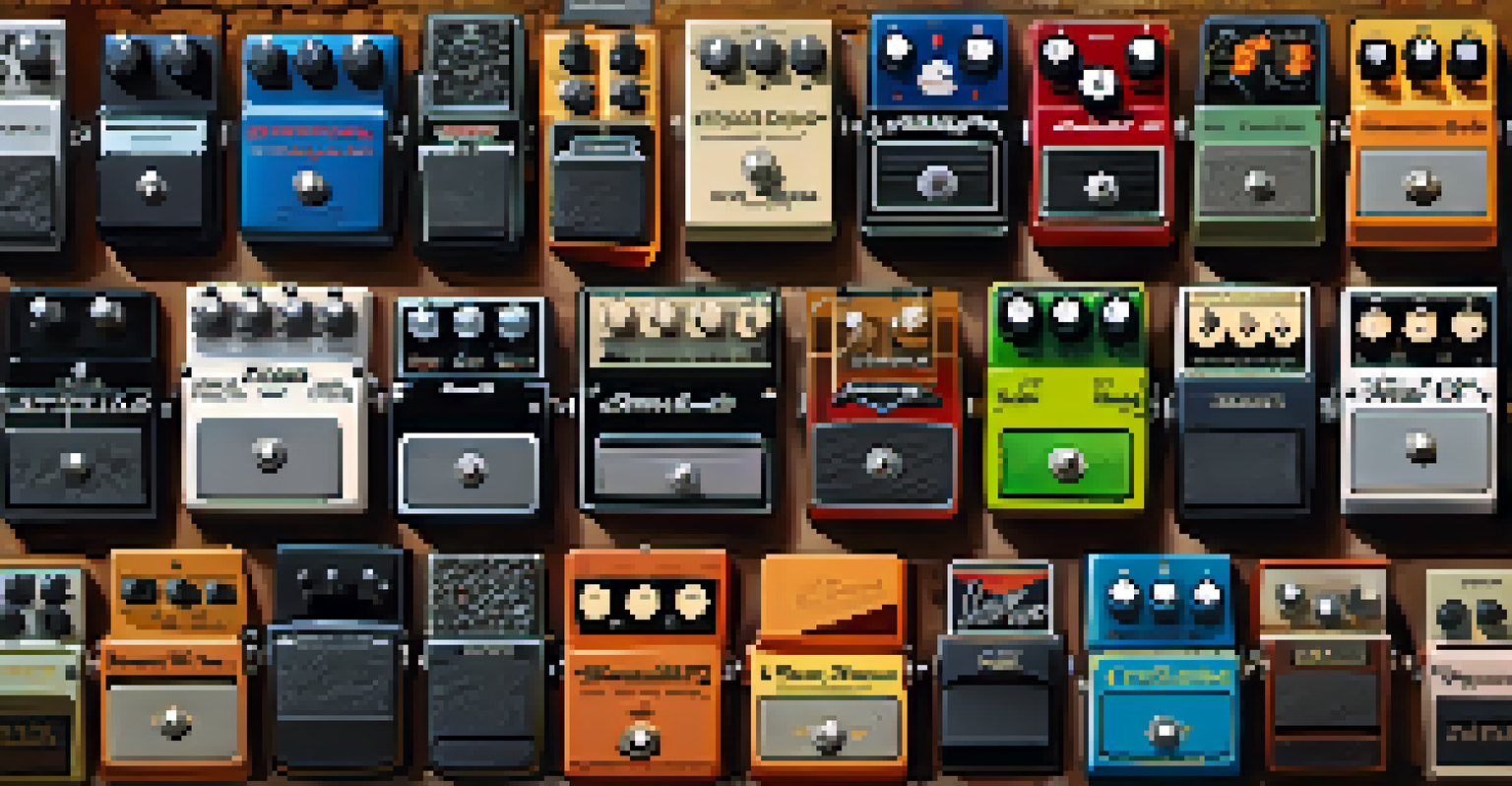The Role of Reverb in Guitar Sound Design Explained

What is Reverb and Why is it Important for Guitarists?
Reverb, short for reverberation, is the persistence of sound after a note is played. Think of it as the echo that lingers in a room after you strike a chord on your guitar. This sonic phenomenon is crucial for guitarists, as it adds depth and character to their sound, transforming a dry note into an immersive auditory experience.
Reverb is the sound of a space, and it’s one of the most important tools in a guitarist’s arsenal to create depth and dimension in their music.
Without reverb, guitar tones can feel flat and lifeless, much like a painting without depth. It creates a sense of space, making the listener feel as if they're in a larger environment, like a concert hall or a cozy café. This spatial quality can significantly enhance the emotional impact of the music, drawing listeners in and holding their attention.
Incorporating reverb into your guitar sound design can elevate your playing, allowing you to create lush soundscapes. Whether you're a solo artist or part of a band, mastering reverb can help you express your musical ideas more effectively and resonate with your audience on a deeper level.
Different Types of Reverb Effects Explained
There are several types of reverb effects, each offering a unique sonic character. The most common types include hall, room, plate, and spring reverb. Hall reverb simulates the sound reflections in a large concert space, while room reverb mimics the acoustics of smaller, intimate settings. Understanding these distinctions can help you choose the right effect for your music.

Plate reverb, on the other hand, uses a metal plate to create reverb sounds, giving it a warm and smooth quality. This type is often favored in studio recordings for its rich texture. Spring reverb, typically found in vintage amplifiers, produces a more metallic and bouncy sound, which can be perfect for surf rock or blues styles.
Reverb Adds Depth to Guitar Sound
Reverb enhances guitar tones by creating a sense of space and emotional depth in music.
By experimenting with these different types of reverb, you can discover how each one affects your guitar tone. This exploration can lead to unique sound combinations that enhance your music and differentiate your style from others.
How to Use Reverb for Dynamic Guitar Soundscapes
Using reverb effectively can transform your guitar playing into a dynamic soundscape. A good starting point is to adjust the reverb level, ensuring it complements rather than overwhelms your notes. Too much reverb can muddy your sound, while too little may not provide the depth you need. Finding the right balance is key to achieving a polished tone.
Music is the shorthand of emotion, and reverb helps convey that emotion by adding atmosphere and depth, making the listener feel part of the performance.
Additionally, consider the timing of your reverb. Shorter decay times can create a more subtle effect, while longer decay times can evoke a grand, atmospheric feel. Experimenting with these settings allows you to tailor your sound to fit the mood of your music—whether you're going for a dreamy vibe or a punchy rock sound.
Incorporating reverb into your live performances can also enhance the overall experience for your audience. By adjusting the settings in real-time, you can dynamically shape the atmosphere of your performance, keeping listeners engaged and immersed in your sound.
The Impact of Reverb on Different Music Genres
Different music genres often utilize reverb in distinct ways, showcasing its versatility. For instance, in ambient music, heavy reverb can create expansive soundscapes that transport listeners to another world. Conversely, in genres like punk rock, a more understated reverb can maintain the aggressive energy while still adding some depth.
In country music, reverb is commonly used to replicate the spacious feel of live performances, allowing the guitar to shimmer and shine. Jazz musicians often employ reverb to enhance the intimacy of their sound, making it feel more personal and inviting. Understanding how different genres approach reverb can inspire your own sound design choices.
Types of Reverb for Unique Sounds
Understanding different reverb types, like hall and plate, allows guitarists to choose the right effect for their style.
By adapting your use of reverb to fit the genre you're playing, you can achieve a more authentic and professional sound. This adaptability not only enriches your music but also helps you connect with your audience on a genre-specific level.
Creative Techniques for Using Reverb in Guitar Sound Design
Beyond basic applications, there are creative techniques for implementing reverb in your guitar sound design. One popular method is to use reverb with modulation, which can add movement and interest to your sound. This technique can make your guitar parts feel more alive, as if they’re breathing with the music.
Another exciting approach is to layer different types of reverb. For example, you might combine a hall reverb with a plate reverb to create a lush, multi-dimensional sound. This layering can help you craft a unique sonic identity that sets your music apart from others.
Lastly, don’t hesitate to experiment with unconventional reverb settings. Try using longer decay times during quieter sections of a song, or applying reverb to just specific notes for dramatic effect. These creative choices can elevate your sound and inspire fresh musical ideas.
Common Mistakes to Avoid When Using Reverb
While reverb is a powerful tool, there are common pitfalls to watch out for. One frequent mistake is overusing reverb, which can lead to a muddy mix where individual notes and chords lose clarity. It's essential to remember that reverb should enhance your sound, not drown it out.
Another error is neglecting to consider the type of reverb used in relation to the rest of your mix. For example, if your guitar is competing with other instruments, a more subtle reverb might be necessary to maintain balance. Always pay attention to how your reverb interacts with the other elements in your track.
Avoid Common Reverb Mistakes
To maintain clarity, avoid overusing reverb and ensure it complements other instruments in your mix.
Lastly, failing to adjust your reverb settings for different playing situations can limit your sound's effectiveness. What works beautifully in a studio setting may not translate well to a live performance, so be sure to adapt your reverb settings based on the context of your music.
The Future of Reverb in Guitar Sound Design
As technology continues to evolve, the future of reverb in guitar sound design looks promising. Advances in digital processing and modeling have led to even more realistic and customizable reverb effects. This means that guitarists have access to an ever-growing palette of sounds to explore and incorporate into their music.
Moreover, the rise of AI-driven audio tools may lead to innovative reverb applications that tailor effects based on individual playing styles. Imagine software that analyzes your performance and suggests optimal reverb settings to enhance your tone. This potential could revolutionize how musicians approach sound design.

Ultimately, staying informed about these advancements and experimenting with new tools will keep your sound fresh and relevant. Embracing the future of reverb could open up exciting possibilities for your guitar playing and inspire your creativity in ways you hadn't imagined.